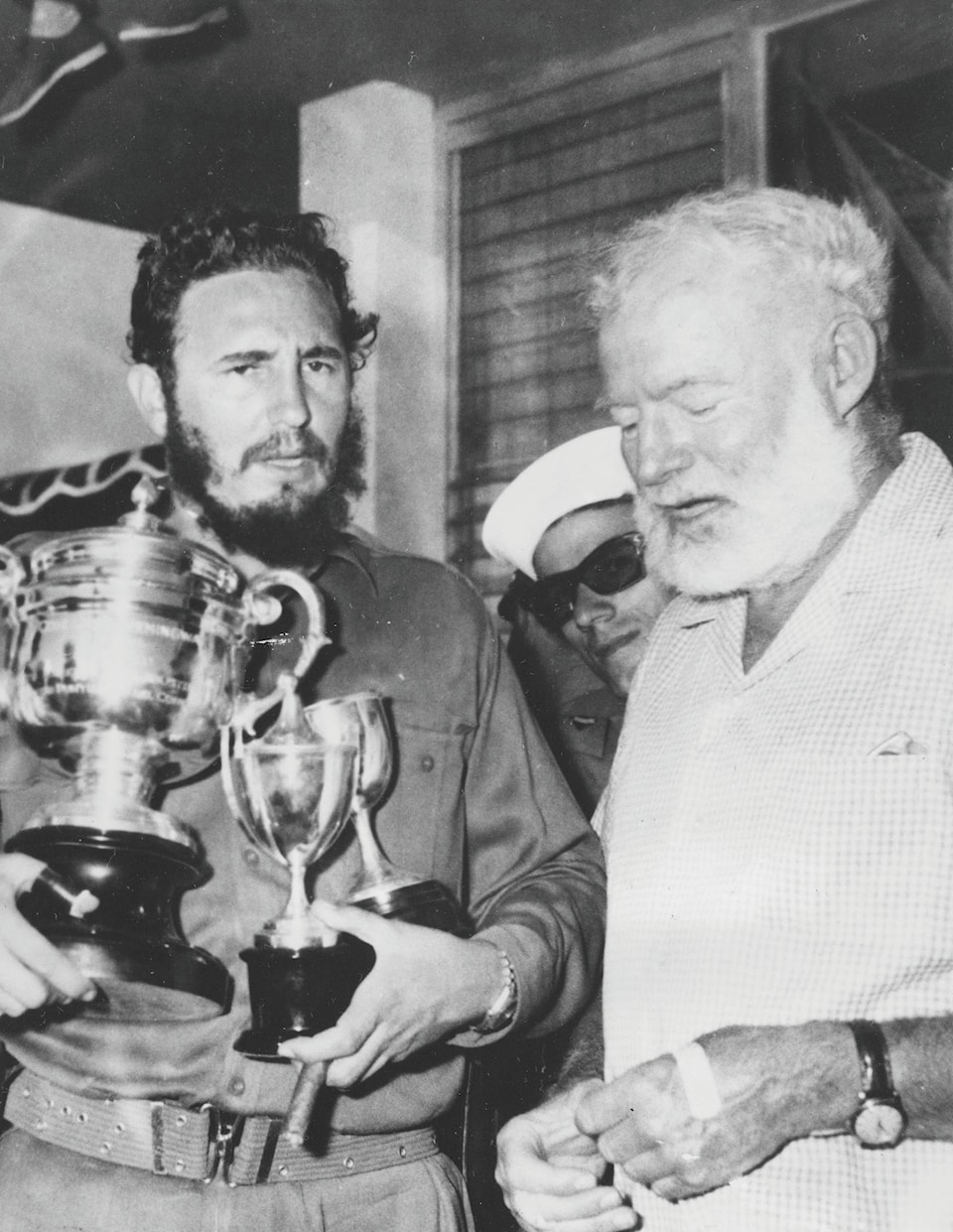In one of Ernest Hemingway’s first published stories, a man goes into the woods and meets a disfigured prizefighter – insightful, though prone to fits of paranoia and violence.
“You’re all right,” says the visitor after they’ve chatted a while.
“No, I’m not. I’m crazy,” the fighter says. “Listen, you ever been crazy?”
“No. How does it get you?”
“I don’t know. When you got it you don’t know about it.”
Nearly a century after The Battler was written, psychiatrist Andrew Farah contends, we would recognize that the prizefighter suffered from chronic traumatic encephalopathy or CTE – the same concussion-induced brain disease now infamous in sports, particularly professional football.
And the prizefighter’s renowned author had CTE, too, Farah argues in his new book, Hemingway’s Brain.
The psychiatrist from High Point University in North Carolina writes of nine serious blows to Hemingway’s head – from explosions to a plane crash – that were a prelude to his decline into abusive rages, “paranoia with specific and elaborate delusions” and the final violence of his suicide in 1961.
Hemingway’s bizarre behaviour in his latter years (he rehearsed his death by gunshot in front of dinner guests, for example) has been blamed on iron deficiency, bipolar disorder, attention-seeking and any number of other problems.
After researching the writer’s letters, books and hospital visits, Farah is convinced that Hemingway had dementia – made worse by alcoholism and other maladies, but dominated by CTE, the improper treatment of which likely hastened his death.
“He truly is a textbook case,” Farah told The Washington Post. “His biography makes perfect sense to me in the context of multiple brain injuries.”
Farah is not the only person to make the link. A shorter discussion of head trauma in Paul Hendrickson’s biography, Hemingway’s Boat, convinced a reviewer that the famous writer “was probably suffering from organic brain damage.”
But Farah’s book goes deeper, mixing biography, literature and medical analysis in what he writes is “a forensic psychiatric examination of his very brain cells – the stressors, traumas, chemical insults, and biological changes – that killed a world-famous literary genius.”
Farah dates Hemingway’s first known concussion to the First World War, several years before he wrote his short story, The Battler.
A bomb exploded about three feet from his teenage frame.
Another likely concussion came in 1928, when Hemingway yanked what he thought was a toilet chain and brought a skylight crashing down on him – causing what Farah describes as “giddy concussive ramblings … about his own blood’s smell and taste.”
Then came a car accident in London – then more injuries as a reporter during the Second World War, when a German antitank gun blew Hemingway into a ditch.
The psychiatrist describes his reported symptoms: double vision, memory trouble, slowed thought. And headaches that “used to come in flashes like battery fire,” Hemingway wrote in a letter.
“There was a main permanent one all the time. I nicknamed it the MLR 2 (main line of resistance) and just accepted that I had it.”
These were “classic and typical” symptoms of head trauma, Farah writes.
And not the last Hemingway would suffer.
After the war: another car accident. Then a fall on his boat “Pilar,” two years before he published The Old Man and the Sea, which a book reviewer called Hemingway’s “last generally admired book.”
Farah did not include in his list of concussions Hemingway’s flirtations with boxing, or accounts of head injuries he could not verify or which he suspected were the author’s tall tales.
But by the time Hemingway survived two consecutive plane crashes on a 1954 safari trip – escaping the second wreck by “batter[ing] open the jammed door with his head,” Farah writes – his remarkable brain was beyond repair.
“The injuries from earlier blows resolved, but, with additional assaults, his brain developed CTE,” Farah writes.
Often – though not always – caused by concussions, chronic traumatic encephalopathy is a degenerative brain disease that can manifest as memory loss, anger, dementia and suicidal behaviour – usually decades after the head blow, according to the Centers for Disease Control.
Unknown in Hemingway’s day, it has been found in the brains of at least 17 dead athletes, and researchers will look for it in the brain of Aaron Hernandez, a former NFL star who killed himself in prison last week while serving a murder sentence.
While Farah can’t autopsy Hemingway, much of his book is spent detailing the writer’s many symptoms.
For example: an episode two years before his death, when Hemingway drove past a bank in his Idaho town, noticed the lights were on after dark, and became convinced that the FBI must be rooting through his account.
Less bizarre but perhaps more devastating to the author: his deteriorating ability to arrange words.
“The genius who had written masterpieces such as A Farewell to Arms and The Snows of Kilimanjaro’ was now paralyzed, fully in the grip of a severe mental illness” as he struggled to assemble simple sentences for his memoirs in 1961, Farah writes.
Smithsonian Magazine contacted Kevin Bieniek, a research fellow who studies CTE at the Mayo Clinic, where Hemingway was eventually hospitalized.
Bieniek agreed that Hemingway sustained traumatic brain injuries and that his paranoia and other symptoms tracked the accounts of confirmed CTE cases. But without an autopsy on Hemingway’s brain - now impossible – he called Farah’s theory “largely speculative.”
